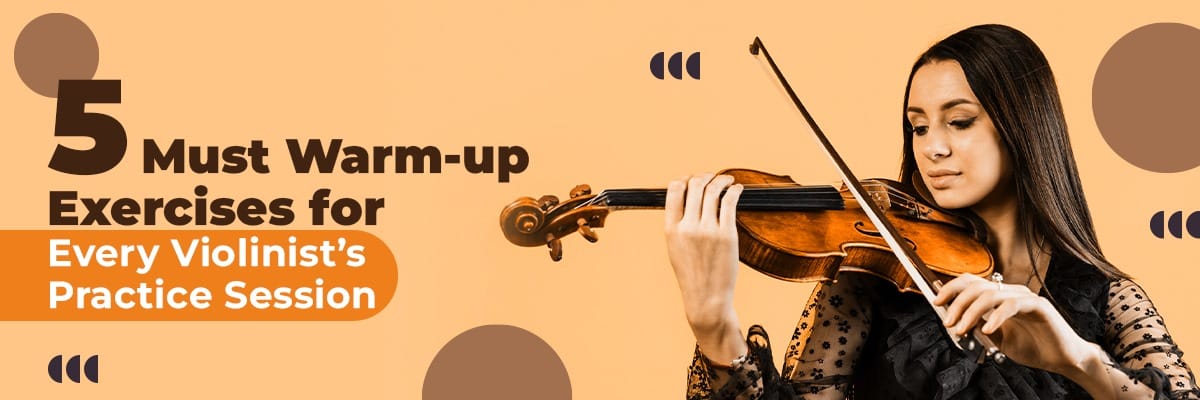
Table of Contents
As a violinist, warming up is a very essential step in preparing your mind and body for an effective practice session.
As other athletes stretch before their workout, violin players are also required to follow some exercises into their routine to keep away from injuries and to improve their playing technique.
In this blog post, we will see the most essential warm-up exercises that every violin player should add to their daily practice routine even if they are taking violin classes online.
Arpeggios
This exercise helps improve left-hand movements as well as gives finger independence.
You can start by playing arpeggios in simple patterns like descending and ascending through the dominant tone and subdominant chords in different keys.
You also need to pay keen attention to the spacing between your fingers and focus more on smooth and fluid transitions between the notes.
With scales, slowly increase the tempo as you move ahead with confidence.
But, always remember to maintain a controlled hand position throughout the violin-playing process.
Scales
Scales are the main pillars of violin playing and are essential for developing finger intonation, bow control, and dexterity.
Usually, it is advised to start your warm-up exercise by playing a number of scales and different keys. You should start with major scales and then gradually move to minor scales.
Emphasise playing every scale easily and slowly with meticulous attention to intonation as well as to the quality of tone.
Then, you can increase the tempo once you become comfortable while always keeping control over speed and prioritise accuracy.
And remember, as you progress towards mastering violin, you can enhance your skills with Spardha School of Music's violin certification program.

Finger exercises
These exercises help to strengthen the muscles in your left hand and also help in bringing flexibility to the fingers.
Initiate by practicing some simple finger patterns like chromatic scales, finger extensions, and trills. So, even if you are learning through online violin lessons, this exercise is pivotal!
You must focus on keeping your fingers near the fingerboard and lifting them up high so that it produces a clear and ringing tone.
When you become comfortable, give yourself some more challenges with some complex exercises like finger octaves or double stops.
Bow exercises
Your main focus should be on maintaining a smooth sound right from the beginning till the end of every stroke.
Now, you can move to some exercises that include various bowing techniques such as spiccato, detached, and staccato.
Spiccato - This is a bouncing bowing technique where the bow is lightly bounced on the strings. This produces short, crisp, and separated notes.
Detached - This technique includes playing notes separately with a little pause between each one just like dots in a row.
Staccato - Here you need to apply pressure to the string and lift the bow quickly between each note.
It is also mandatory to pay attention to the weight distribution in your bow arm and make your playing smooth with each stroke.
Intonation exercises
It is the most important area of violin playing and requires regular practice for developing accurate pitch.
Start intonation exercises in your warm up practice routine by playing some simple skills or melodies with the help of a drone or a tuner.
Try to match the pitch of every note and make necessary adjustments to correct the intonation mistakes.
With the passing time and regular practice, you will develop a strong sense of pitch and will be able to play tunes with more confidence.
Wrapping Up
Warm-up exercises are a very important part of every practice routine of a violin player. It helps greatly in improving overall performance and violin playing techniques.
With these above-mentioned warm-up exercises, you will prevent some injuries while also laying a foundation for continuous growth as a violinist.
Performing these warm-up exercises is essential even if you are attending violin classes online or offline.